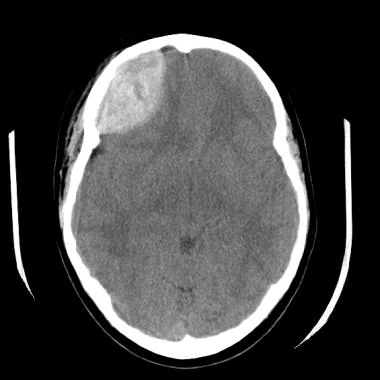Extradural hematoma – the best treatment is at Dr Raos, Guntur
Introduction
Extradural Hematoma – Epidural hemorrhage (EDH) is a serious condition that can occur when blood vessels in the brain rupture. This can happen after a head injury, or it may be the result of a medical condition such as an aneurysm. EDH can lead to brain damage and even death if it is not treated quickly. Symptoms of EDH include headache, nausea, vomiting, dizziness, and confusion. If you experience any of these symptoms after a head injury, it is important to seek medical help immediately. EDH is diagnosed with a CT scan or MRI of the brain. Treatment for EDH typically involves surgery to repair the damaged blood vessels. If you are looking for complete care of your intracerebral or intracranial or brain hemorrhage, look no further than Dr. Raos hospital, the best neurosurgery, spine surgery, and Best neurology hospital in Guntur. Call us @ 9010056444 or 9010057444 for your loved ones’ care.
Epidural hemorrhage Risk factors
There are several risk factors associated with epidural hemorrhage. One of the most significant is head trauma. This can occur during a car accident, a fall, or any other type of impact to the head. Other risk factors include:
– Use of blood thinners or anticoagulants
– History of bleeding disorders
– Pregnancy
– Advanced age
– Alcohol use
Epidural hemorrhage causes: Extradural Hematoma
There are many potential causes of epidural hemorrhage. One common cause is head trauma, which can damage blood vessels in the brain and lead to bleeding. Other causes include brain tumors, aneurysms, and strokes. In some cases, the exact cause of the hemorrhage is unknown.
Epidural hemorrhage Symptoms
Symptoms of an epidural hemorrhage may include:
-Sudden, severe headache
-Neck stiffness
-Nausea and vomiting
-Sensitivity to light
-Loss of consciousness
Epidural hemorrhage diagnosis
The diagnosis of EDH is made by CT scan in most cases. The classic finding on CT scan is a hyperdense hematoma in the epidural space. The hematoma may be homogeneous or heterogeneous in density. A heterogeneous density is often seen when there is active bleeding. The hematoma may compress the brain and cause mass effect.
Epidural hemorrhage treatment
There are two main types of treatment for epidural hemorrhage: medical and surgical. Medical treatment involves the use of medications to control the bleeding. This may include stopping the use of blood thinners, such as heparin, or anti-platelet drugs, such as aspirin. Surgery is usually only necessary if the bleeding is severe and does not respond to medical treatment. Surgical treatment involves the removal of the blood clot and the repair of any damaged blood vessels. This can be done through a variety of methods, including open surgery, endoscopic surgery, or angiography. The choice of treatment will depend on the severity of the hemorrhage and the health of the patient. In most cases, medical treatment is successful in controlling the bleeding and preventing further damage.
Conclusion
There are many factors that contribute to the development of epidural hemorrhage, and it is important to be aware of the risks. Early diagnosis and treatment is essential to preventing serious complications. If you are looking for complete care of your cerebral or intracranial or brain hemorrhage, look no further than Dr. Raos hospital, the best neurosurgery, spine surgery, and neurology hospital in Guntur. Call us @ 9010056444 or 9010057444 for your loved ones’ care.

